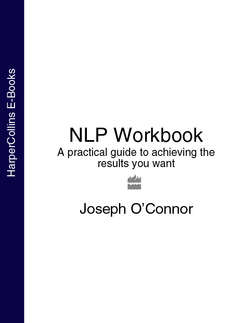Читать книгу NLP Workbook: A practical guide to achieving the results you want - Joseph O’Connor - Страница 21
The Language of Neurological Levels
ОглавлениеYou can tell what level a person is thinking on by listening to the words they say. For example, you can map all five levels using one sentence: ‘I can’t do that here.’
When ‘I’ is stressed, it is a statement about identity: ‘I can’t do that here.’
When ‘can’t’ is stressed, it is a statement about belief: ‘I can’t do that here.’
When ‘do’ is stressed, it is a statement about capability: ‘I can’t do that here.’
When ‘that’ is stressed, it is a statement about behaviour: ‘I can’t do that here.’
When ‘here’ is stressed, it is a statement about environment: ‘I can’t do that here.’
Here are some examples of statements that clearly show which level they are coming from:
| Identity | ‘I am a good manager.’ |
| Belief | ‘Taking the MBA helped me a great deal in my career.’ |
| Capability | ‘I have excellent communication skills.’ |
| Behaviour | ‘I did poorly in that appraisal.’ |
| Environment | ‘I work well with this team.’ |
| Identity | ‘I am basically a healthy person.’ |
| Beliefs | ‘Physical health is important to me.’ |
| Capability | ‘I am a good runner.’ |
| Behaviour | ‘I ran a mile in seven minutes.’ |
| Environment | ‘The new gym is a great place to work out.’ |
You can also use neurological levels to explore a problem, or when you are confused and uncertain what to do. Once you know what level you are stuck on, you know what sort of resources you need.
Environment: Do you need more information about the situation?
Behaviour: Do you have enough information, but do not know exactly what to do?
Capability: Do you know what to do, but doubt your ability to do it?
Beliefs and values: Do you know that you have the ability, but not want to do it or not think it is important?
Identity: Do you feel that it is a worthwhile thing to do, but somehow it’s just ‘not you’?
Confusing neurological levels causes many problems. The most important one is the confusion between behaviour and identity. Children are often told: ‘You are bad!’ (identity statement), when they have done something wrong (behaviour). Consequently many people think that they are what they do and judge themselves accordingly. But each of us is a person who is able to do many things, not all of which will be approved by others.
Neurological levels separate the deed from the person.
You are not your behaviour.
